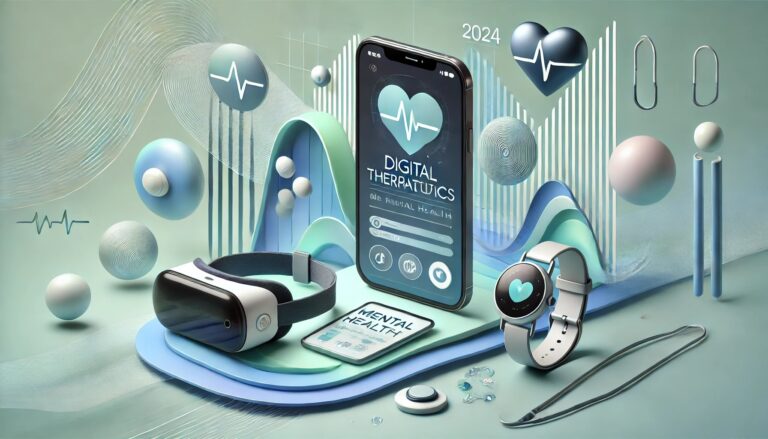With the rapid advancement of technology, wearable devices are becoming indispensable tools for modern health management. From tracking heart rate and sleep quality to monitoring fitness activities, these compact devices allow us to better understand our bodies and take proactive steps to improve our health.
In this article, we’ll explore how wearable technology leverages cutting-edge features to monitor and enhance health. We’ll also recommend top-rated wearable devices available on Amazon, complete with product descriptions and purchase links, to help you find the perfect device for your needs.
What Are Wearable Devices?
Wearable devices are smart gadgets equipped with sensors and wireless connectivity, worn on the wrist, body, or head to collect and analyze health and fitness-related data in real time. Their primary functions include:
1. Health Monitoring: Tracking metrics such as heart rate, blood oxygen levels, steps, and calories burned.
2. Sleep Tracking: Measuring sleep duration and quality to optimize rest habits.
3. Fitness Tracking: Recording data for running, cycling, and other activities to help users achieve fitness goals.
4. Lifestyle Reminders: Alerts for prolonged inactivity, hydration reminders, and other prompts to encourage healthier routines.
How Do Wearable Devices Monitor and Improve Health?
1. Real-Time Health Monitoring
Wearable devices are equipped with advanced sensors to provide 24/7 monitoring of vital health data, such as:
• Heart Rate Monitoring: Using photoplethysmography (PPG) technology to detect heart rate fluctuations and abnormalities.
• Blood Oxygen Levels: Measuring oxygen saturation in the blood, crucial for high-intensity workouts or respiratory health monitoring.
• Body Temperature: Some devices can track temperature changes as indicators of health status.
These real-time insights allow users to adjust their routines proactively and avoid potential health risks.
2. Improving Sleep Quality
Many wearables offer sleep tracking features that detect:
• Sleep duration and wake times.
• Proportions of deep sleep versus light sleep.
• Irregularities such as night waking or breathing disruptions.
With these insights, devices provide actionable recommendations to help optimize bedtime habits and improve overall sleep quality.
3. Custom Fitness Plans
Wearable devices use your fitness data to create personalized workout plans, such as:
• Setting daily step goals to encourage increased activity.
• Using GPS to track running routes and speed for enhanced performance.
• Monitoring heart rate during workouts to prevent overexertion and potential injury.
4. Encouraging Healthy Habits
Beyond tracking, wearable devices promote healthier routines through various reminders, such as:
• Inactivity Alerts: Nudging users to move after prolonged sitting.
• Hydration Reminders: Encouraging regular water intake for optimal hydration.
• Breathing Exercises: Guiding users through relaxation techniques to reduce stress.
Top Wearable Devices on Amazon
Here are some of the best wearable devices available, complete with Amazon purchase links to help you make an informed choice:
1. Apple Watch Series 9
Why We Recommend It:
• Equipped with heart rate monitoring, blood oxygen tracking, and ECG capabilities.
• Tracks fitness activities, sleep data, and GPS locations.
• Seamlessly integrates with iPhone and Apple Health App.
Best For: High-end users seeking advanced health monitoring.
👉 Buy Apple Watch Series 9 on Amazon
2. Fitbit Charge 6
Why We Recommend It:
• Comprehensive health tracking, including heart rate, sleep, and activity data.
• Provides daily readiness scores and personalized fitness suggestions.
• Long battery life lasting up to 7 days.
Best For: Budget-conscious users who want a feature-packed health wearable.
👉 Buy Fitbit Charge 6 on Amazon
3. Garmin Venu 2
Why We Recommend It:
• Professional-grade activity tracking, perfect for runners, cyclists, and swimmers.
• Includes blood oxygen and stress tracking for holistic health data.
• Stylish design with a high-quality AMOLED display.
Best For: Fitness enthusiasts and outdoor adventurers.
Tips for Using Wearable Devices Effectively
1. Choose the Right Device: Select a device based on your specific health needs, such as sleep tracking or professional fitness monitoring.
2. Check Data Regularly: Make it a habit to review your health data periodically to identify long-term trends.
3. Combine with Professional Advice: Wearable data serves as a reference but should be paired with guidance from doctors or nutritionists for critical health decisions.
4. Protect Privacy: Ensure your data is stored securely by choosing devices from trusted brands and apps with strong privacy measures.
How to Get Started with Wearable Devices
1. Identify Your Needs: Decide whether you want to focus on fitness, sleep, heart rate, or overall health monitoring.
2. Purchase a Device: Choose a product that fits your budget and functionality needs.
3. Set Goals: Establish specific targets, such as daily steps or workout time.
4. Stay Consistent: Wear your device daily and use the data to make informed adjustments for long-term health improvement.
Conclusion
Wearable technology is revolutionizing how we monitor and manage our health. By leveraging cutting-edge sensors and real-time analytics, wearable devices enable more proactive and informed health decisions. From high-end options like the Apple Watch to budget-friendly choices like Xiaomi Mi Band, there’s a wearable device for everyone, regardless of your budget or goals.
Start your journey toward better health today by selecting the perfect wearable device and embracing a tech-powered approach to wellness!




















